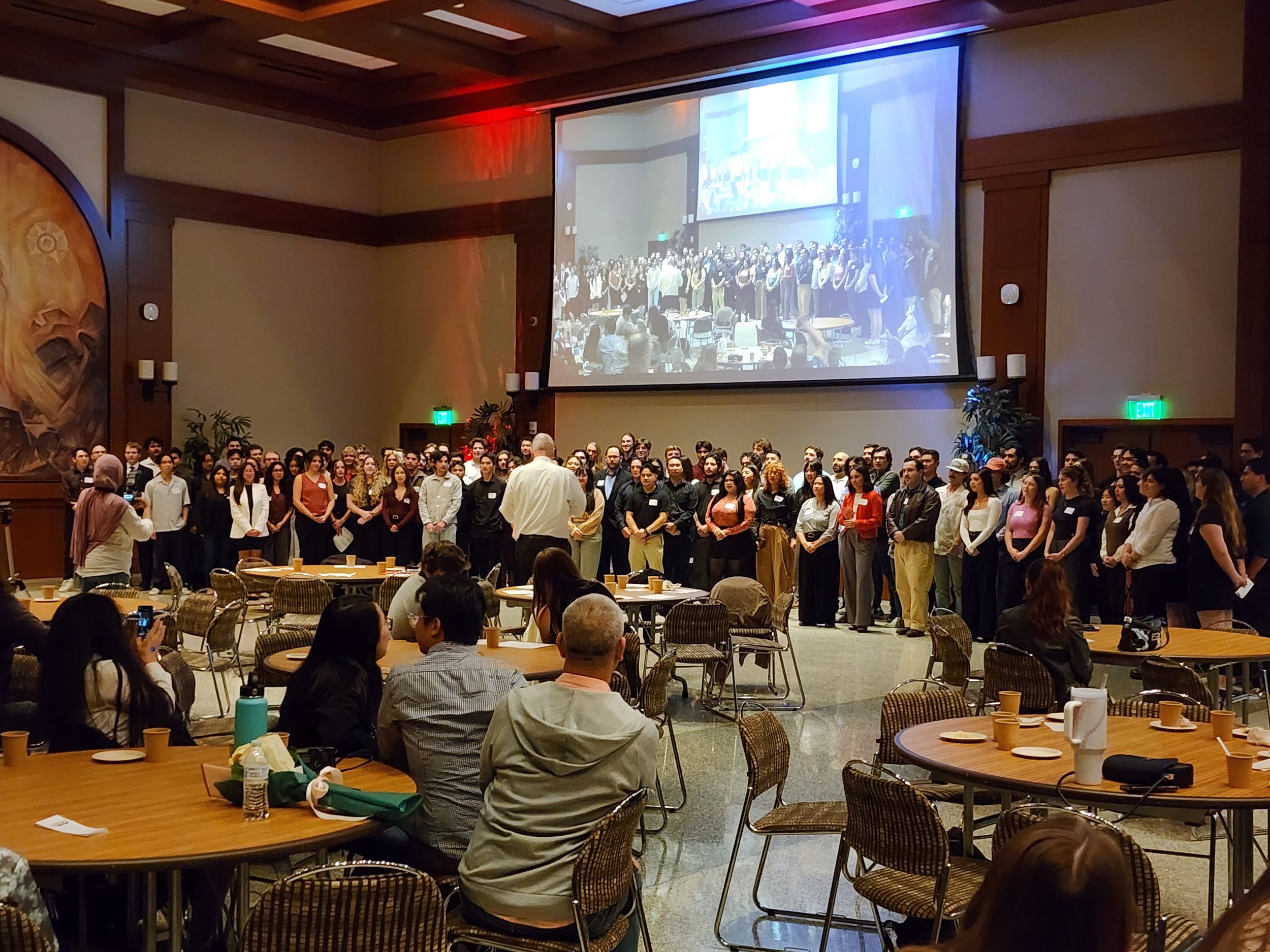
Extended Resume & Projects
Experience



















-
This description is soon to come.
-
This description is soon to come.
-
Coordinated college wide events, such as a pumpkin drop competition, and engineering week, with the goal of supporting and celebrating engineering students, clubs and organizations.
Planned, coordinated, and MCed the largest to date broadcasted and banquet style Order of the Engineer Ceremony at SDSU, with a record breaking 300 attendees.
Raised the most money for Aztecs Rock Hunger out of all councils, student organizations, and university divisions.
Received the Most Outstanding Council Award from the National Association of Engineering Student Councils.
-
Initiated a study to reduce spending on firing tape used in cofiring.
Utilized automated dimensional data acquisition with 3D profilometers ensuring parts remain within specifications across various tests.
Achieved an average savings of ~80% from original spending, saving upwards of $50k a year - Lean of Lean Six Sigma
Conducted foreign material analysis within the greenside cleanroom to improve defect loss.
Issues test strips to determine sources of FM inside and outside machines. Eliminated and issued repairs for problematic items.
Wrote and created illustrations for detailed work instructions depicting proper cleaning methods for various machines and processes in the cleanroom. Worked with production, plant engineering, and the plant technology center to ensure sustainability, safety, and efficiency of the work instructions. - Six Sigma of Lean Six Sigma
-
Collaborating with graduate students to research manufacturing methods of foamed metals using the Powder Compact Metal Foaming process.
Preparing mixed powders via tumbling and ball milling, optimizing particle size distribution, and performing powder compaction through uniaxial dry pellet pressing in a hydraulic press, utilizing diamond suspension polished dies.
Analyzing green body surface morphology and grain size via microscopy and image processing with ImageJ.
Conducting metal foaming and quantified density changes using Archimedes' principle.
-
Providing Tier 1 technical support to clients via phone and email, resolving a wide range of issues related to managed services and cloud deployments.
Utilizing Veeam to manage both on-premises and off-site data backups, ensuring accuracy and data integrity.
Maintaining company data integrity and accessibility by importing, organizing, and updating information on IT Glue, Datto, and SharePoint.
Managing and distributing software license keys, ensuring compliance, and optimizing resource allocation.
Troubleshooting remote desktop servers and basic QNAP server configurations.
Building and configuring client-ready computer systems, demonstrating attention to detail and efficient workflow.
-
Successfully managed all aspects of the business from contract negotiations and invoicing to price discussions, ensuring a seamless experience for clients.
Captured and edited a diverse range of projects including assignments for esteemed clients like the Hal Marcus Gallery, St. Paul's United Methodist Church, and multiple memorable weddings, delivering high-quality, personalized visual content that exceeded expectations
-
Proficient in surveying and photogrammetry using Pix4D, with a strong capability in acquiring and analyzing aerial data
Skilled in operating and maintaining flight equipment, including flight controllers, electronic speed controllers, soldering, BetaFlight programming, and adept at troubleshooting technical issues.
Achieved excellence by designing and racing FPV drones, placing first place in both State and National competitions for SkillsUSA and the Technology Student Association (TSA).
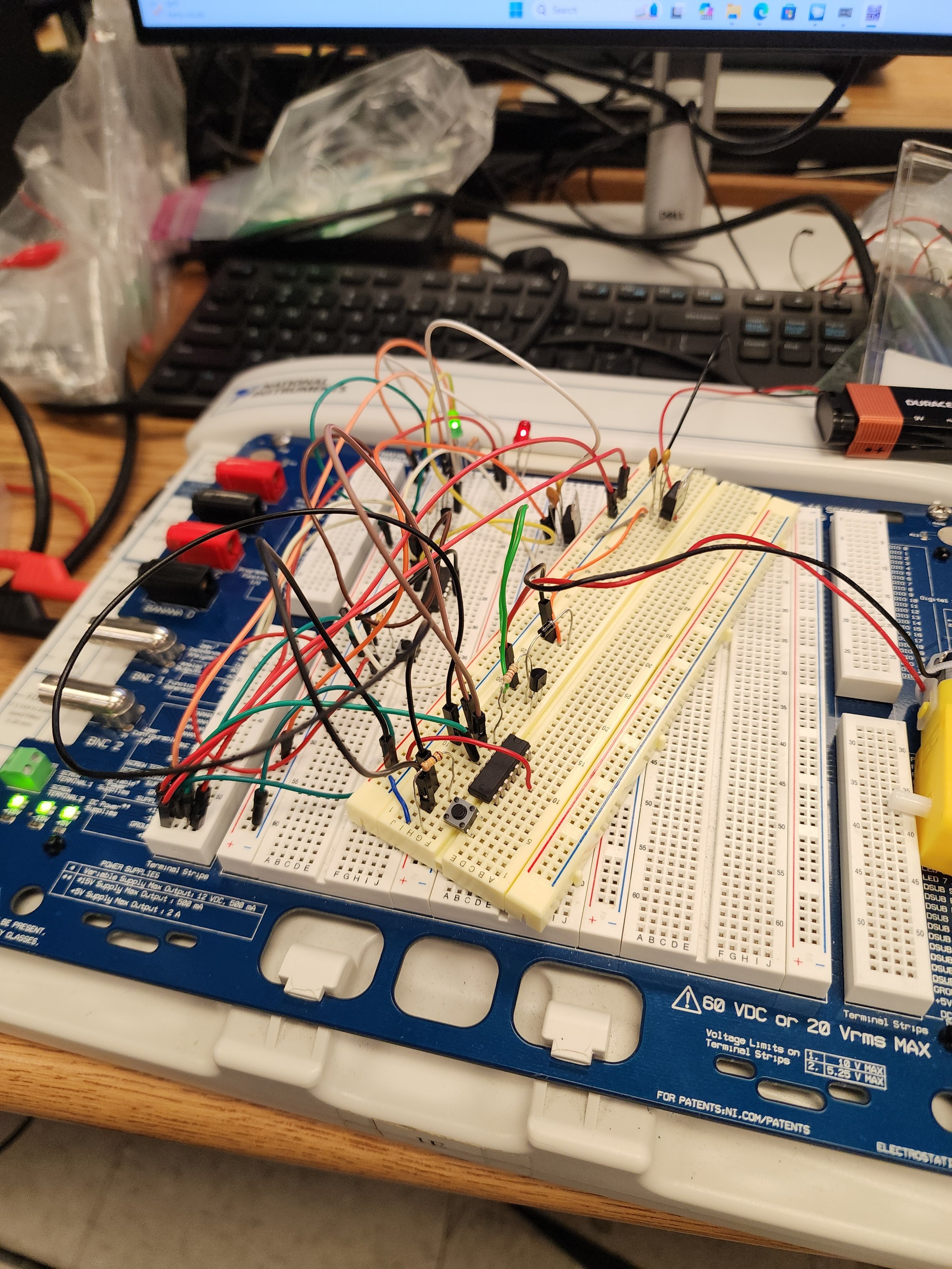
Projects
I was running out of my allocated storage space on Google, despite the additional 85GB I'm subscribed to. I love the idea of a personal cloud vault with virtually infinite storage, and great security and I'd love it even more if I didn't have to pay for it.
During my time at myCREcloud, I would set up QNAP file servers, ProxMox servers running virtual computers that had all the software and power they needed to work, and which they could access from anywhere with an internet connection and the right VPN, and work on Windows Domain Controllers performing basic user management. My time here introduced me into the possibilities of computing and networking that I have been overlooking.
I had a few old computers laying around my childhood bedroom in my parents house that yearned for a second life.
I wanted a system that was command line based, accessible by my phone and tablet, and had Windows WebDAV integration so I could access the remote server as if it were a drive plugged into my computer. The idea of operating a computer only via command lines intimidated me, but that uncertainty drew me into it.
I settled on NextCloud, running on an Ubuntu CLI environment. After weeks of messing around, issues with apt and snap file configurations, getting things working, breaking it, and getting it working again, I have a reliable file server.
I am using Tailscale tunneling to access the file server from anywhere I have Internet access. This was the most convenient and also safest option for my configuration as I don't have to open any ports on my home network making them available to outside attackers.
I now have about 3 terabytes of storage to my disposal. I have backed up all images from all old phones into the file server, so now I have one coherent gallery of images I've taken since my first phone. It houses all of my school work so I can switch between devices and not have to figure out if the word document I was working on was saved to my personal Onedrive, my school Onedrive, on my google drive, or still saved on my laptops local storage.
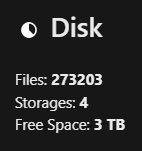
There still remain a few issues.
Image recognition is not currently working as Nextcloud doesnt think the Node.js binary on the system is the correct version, despite the specified binary being the version requested. I am not what the root cause of this is. Once this issue is resolved, I am hoping to speed up image recognition by using the GPU instead of the CPU, but this is a whole different realm of computing that I am not familiar with at all and far into the future.

The upload and download speeds of the server seem to be heavily throttled, even when connected via the same network instead of through Tailscale.
There is currently no redundancy for the storage. I currently have no RAID system set up, so if a drive fails with data on it, any data lost is for sure gone. This is the most pertinent issue currently.
In my Introduction to Engineering Design Course, I worked on team of 8 student to design the transmission for a commercial-turbofan accessory-drive gearbox, beginning with the input drive shaft rotating at 8 400 rpm with 750 in·lbf of torque and finishing with four correctly-timed output accessory shafts.
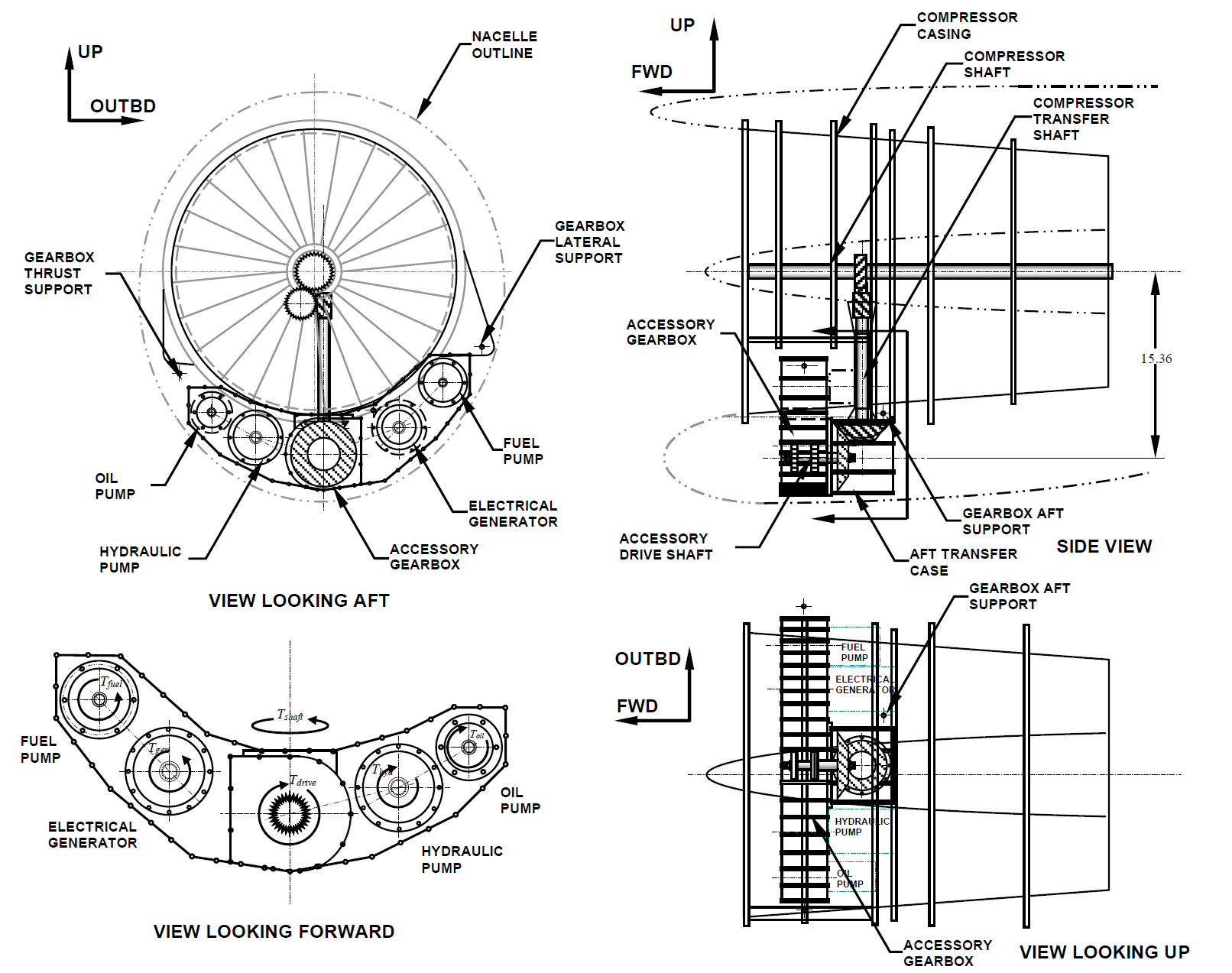
The final layout packs a 16 gear transmission, 15 of which are spur gears, plus a bevel gear which drives the input drive shaft from the outside of the gearbox from the turbofan input. The gearbox has a complex u shaped geometry that is 4.75 inches in depth (see below).
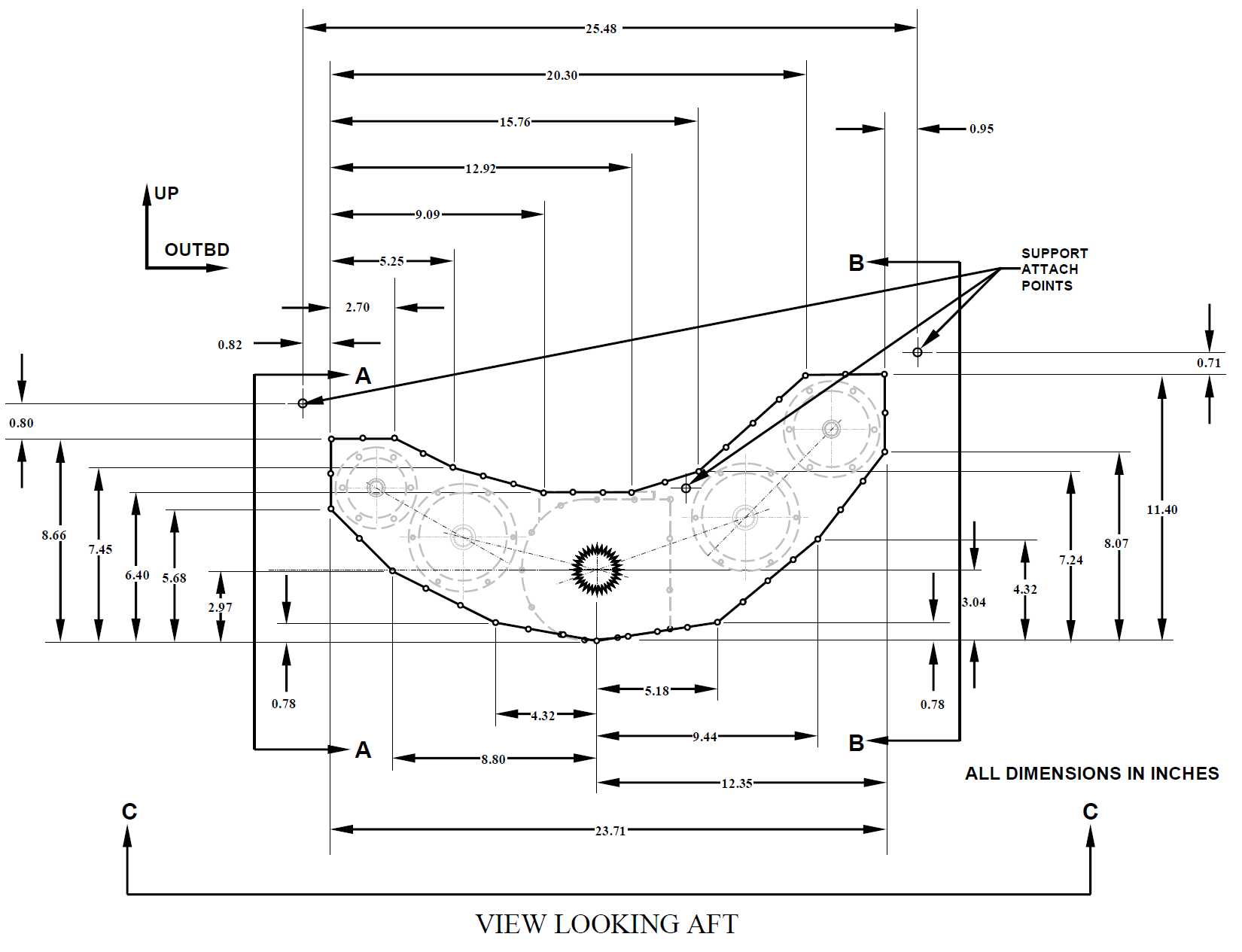
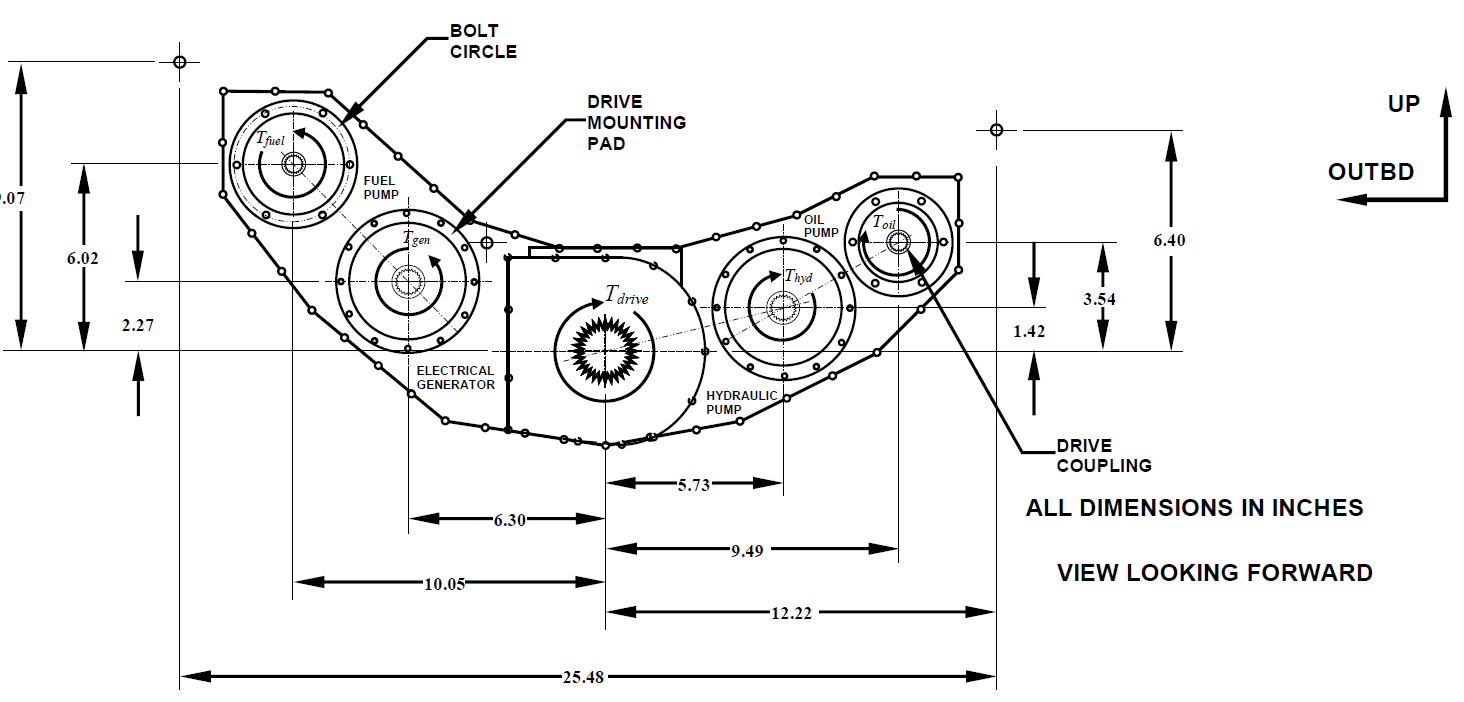
There are three compounded stages, mixed diametral pitches (10, 12 and 16 teeth · in⁻¹) and 20° spur teeth let every accessory hit its spec speed within ±10 rpm.
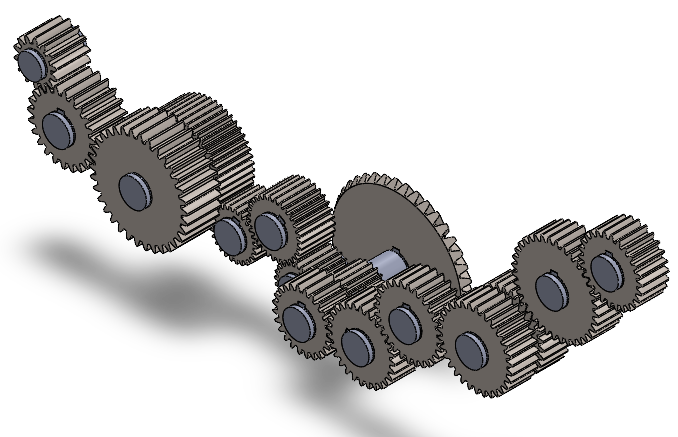
All the gears are made of Nitralloy 135M,chosen for its high nitrided hardness, but are of different grades: two drive trains are Grade 1, one is Grade 2, and one is Grade 3.

The shafts are made of 1.0 in-OD AISI 1050 steel, quenched & tempered at 400 °F, which provides the strength needed without exotic alloys. Using AGMA 2001 bending and contact formulas we verified that every gear cleared the project minimum safety factors (1.30 in bending, 1.15 in contact). The governing part is Gear 9, a 20-tooth, 1.25 in pitch-diameter pinion that accepts the full 375 in·lbf half-shaft torque, yet it still retains safety factors of 1.36 (bending) and 3.07 (pitting); a roughly 9 % torque increase would make it the first element to dip below margin. The table below shows the FoS in contact/pitting and bending stress for each gear.
We applied the DE-ASME Elliptic criterion at all shaft discontinuities. The main drive-shaft’s retaining ring groove proved critical at a 1.66 design factor, while its keyway held 1.99; the tightest accessory shaft (Shaft D) showed 2.35, all above the 1.15 / 1.10 requirements, and an S-N curve confirmed the shaft operates in the infinite-life regime. Below is the DE-ASME Elliptic criterion equation used to calculate the FoS of the shaft. The table below goes on for quiet a while, be prepared to scroll.

Since this gearbox is going on a plane, there is a strict weight limit of 260 lbf. All of our gears and shafts come out to 249.7 lbf, comfortably beneath the 260 lbf limit.
Analysis loops were automated in Excel, and the finished SolidWorks assembly meets AGMA Quality 10, 99 % reliability, and 10⁸-cycle life targets while identifying Gear 9 and the groove as the true growth-limiters for any future power surges.
In my Introduction to Engineering Design course I completed a solo design of a torsion bar suspension shaft and all associated hardware for a theoretical heavy duty vehicle. Below is the full completed assembly of the torsion bar along with the nomenclature that will be used to reference each portion.
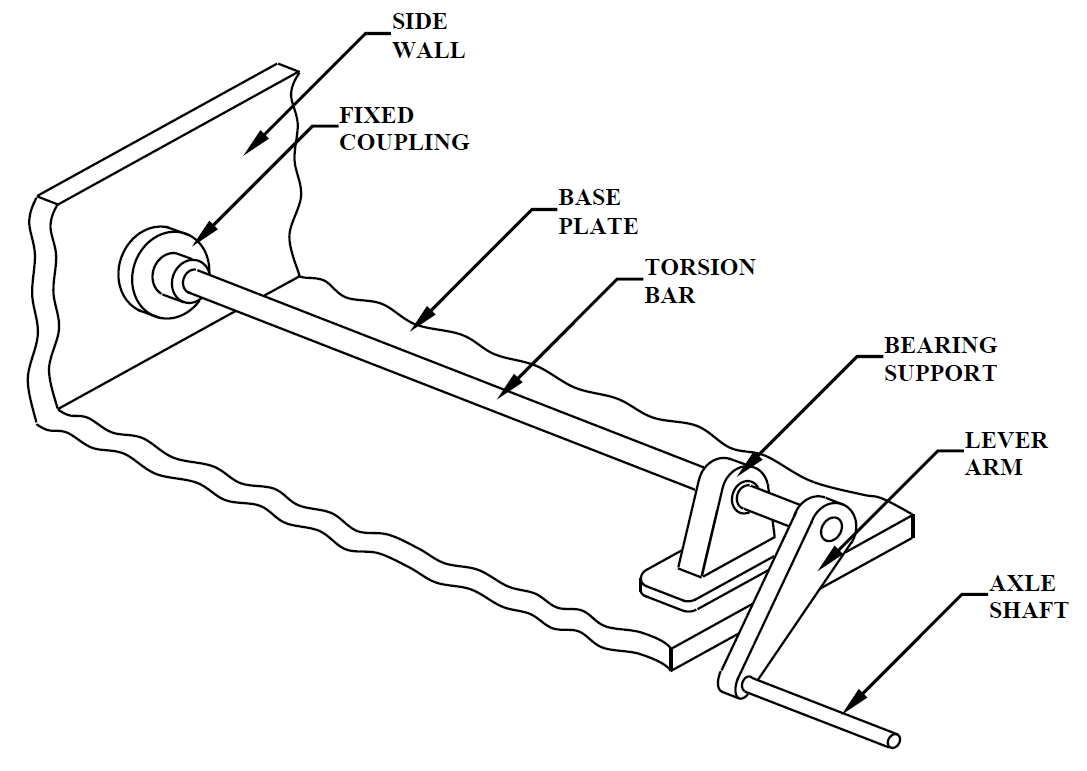
The side wall and base plate are made of an unspecified aluminium alloy, with the base being 0.4375 inches thick, and the side wall being 0.250 inches thick. The material and thickness of the base plate and side wall were out of the scope of this project and were intentionally vaguely defined in the project briefing.
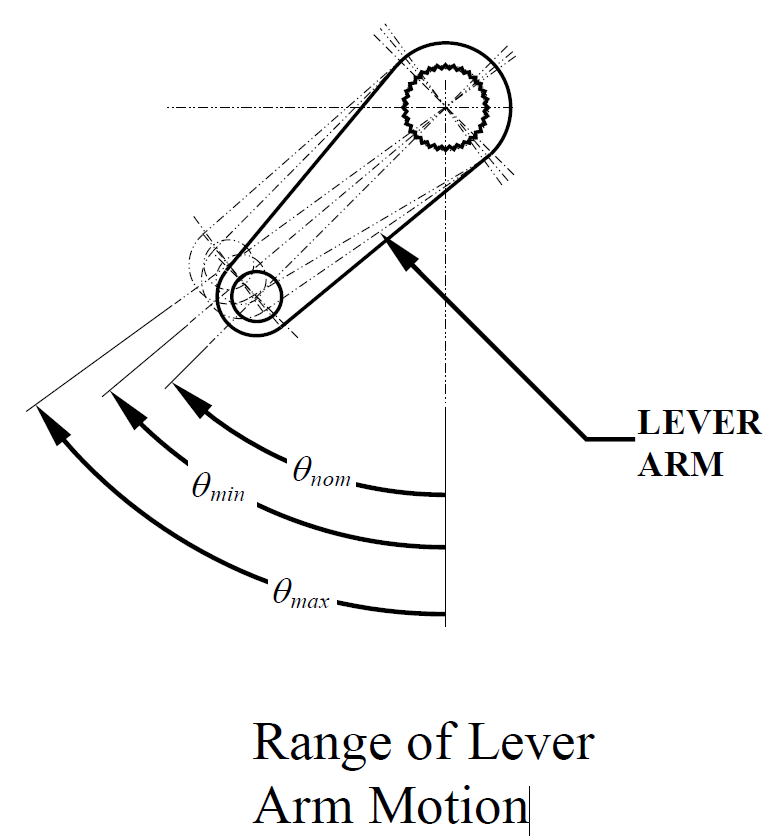
The torsion bar is made of hollow 4130 Q&T 205°C/400°F steel with a 2.15 inch inner and 2.673 inch outer diameter. The torsion bar was dimensioned so when the bar is at the maximum operating deflection angle, (51°) it is supporting 2510 lbf, and when at its minimum operating deflection angle (47°) it is supporting 890 lbf, enough to handle bumps and hauling heavy loads. At no load, the lever arm sits at 45°.
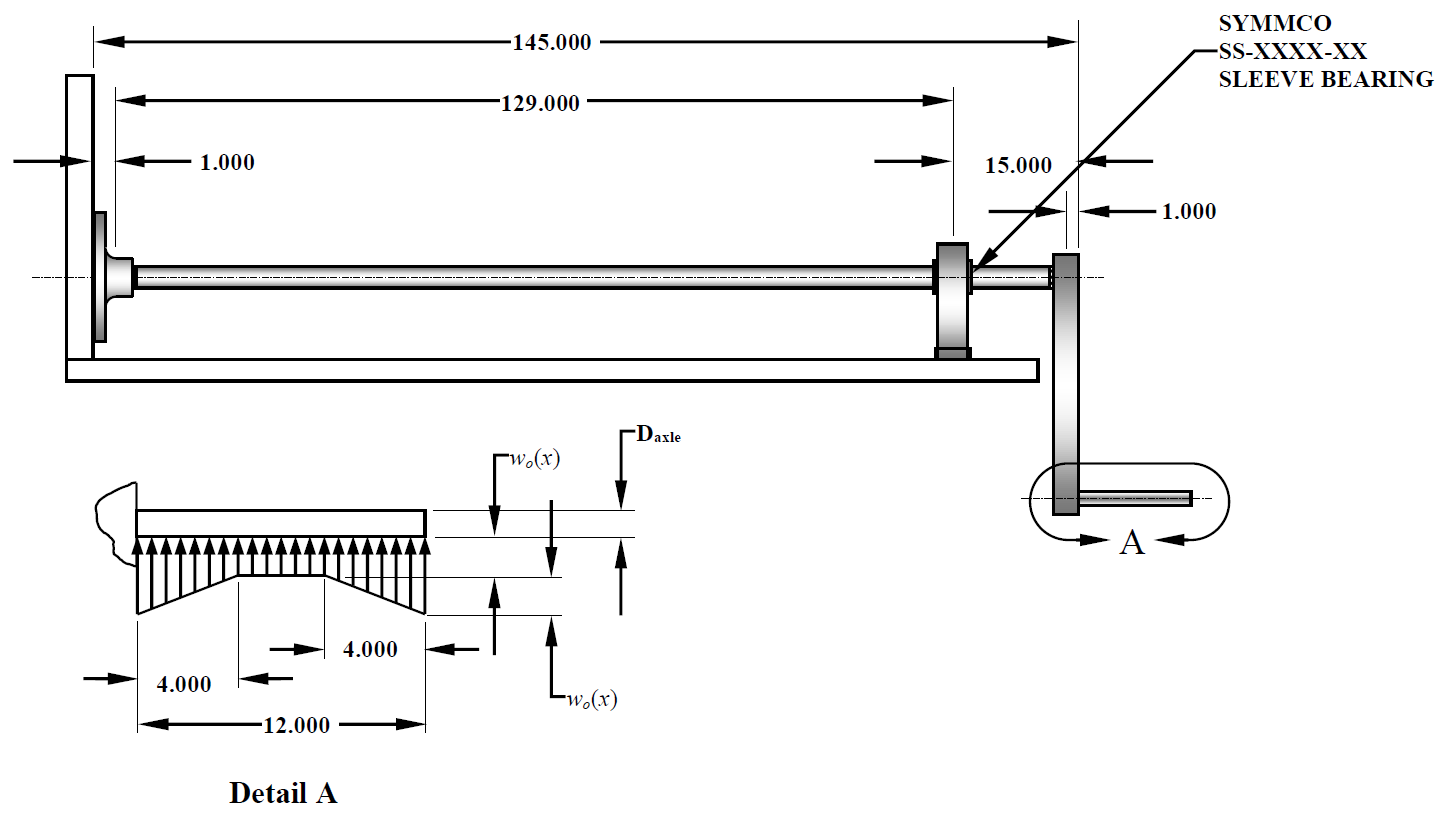
The torsion bar came out with a static torsional safety factor of 10.4 and a fatigue safety factor of 2.7 (Modified Goodman, 99.9 % reliability), which places the component in the infinite-life region of the S-N curve.

Both ends of the bar were keyed with a 20-tooth, 30° pressure angle 8/16 spline that transmits up to 29 k lbf-in from the lever arm to the fixed coupling without slip. ANSI-B92 checks yielded safety factors of 38.9 in compression, 1.06 in shear, and 1.73 in the spline shaft, clearing the 1.05 requirement while keeping the bar diameter in spec.
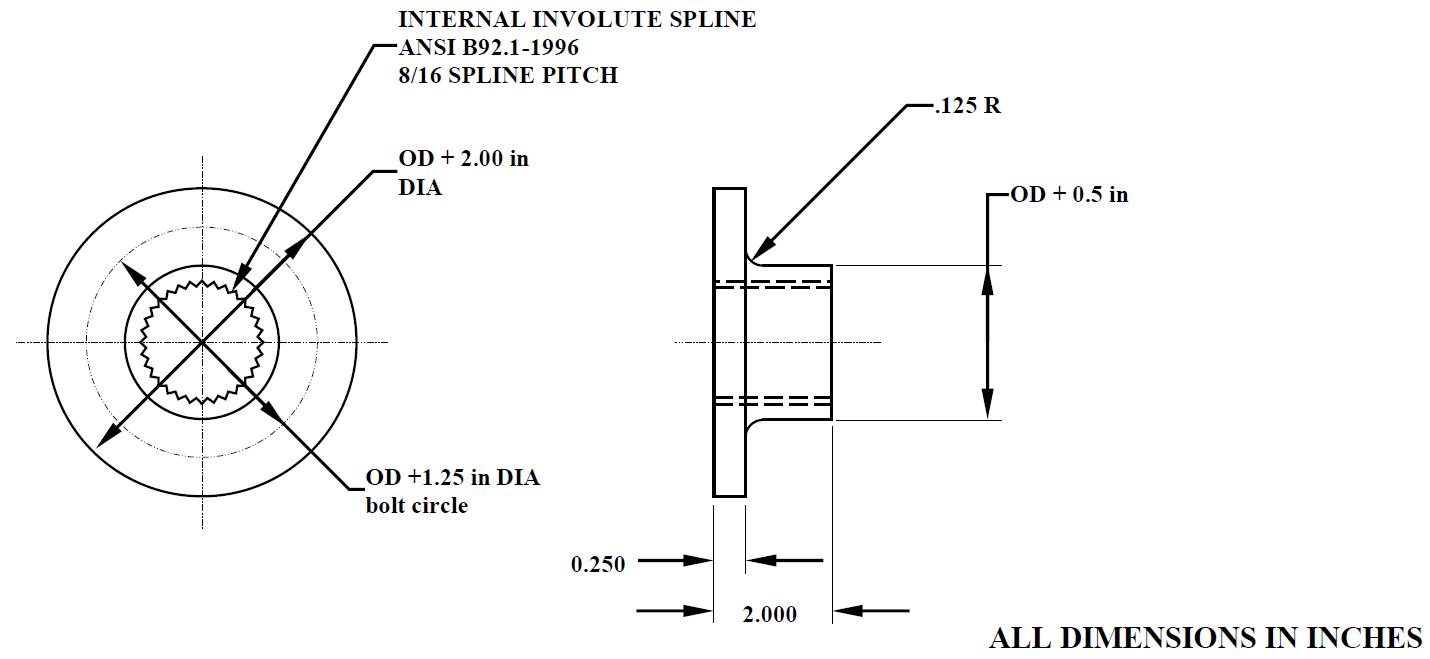
I dimensioned the aluminum bearing support lug made of 3003-H16 (0.50 in thick) with a bronze sleeve bearing that mounts the bar to the chassis. The lug records a FoS of 4.16 and the bearing interface posts 7.3 (R/D) / 31.5 (W/D)—both well above the mandated 3.75. Two SAE-Grade-2 bolts clamp the lug and the joint analysis returned safety factors of 1.21 in yield, 3.33 in overload, and 4.46 against separation.

To complete the linkage I sized a 12 in solid 1010 cold drawn steel axle to 2.5 in Ø, delivering a bending safety factor of 2.24 versus the 1.15 minimum and 0.79 in of vertical wheel travel. A minimum shaft diameter of 2.01 was required to meet the FoS, but for each of manufacturing and additional safety it was increased to a 2.5 inch diameter shaft.
All calculations (static torsion, fatigue, spline contact, bolt stiffness, lug bearing, axle bending) were automated in Excel. The result is a cost efficient and manufacturable suspension member whose weakest points, which is the spline shear and bolt yield, still hold more than 5% margin above every project criterion.
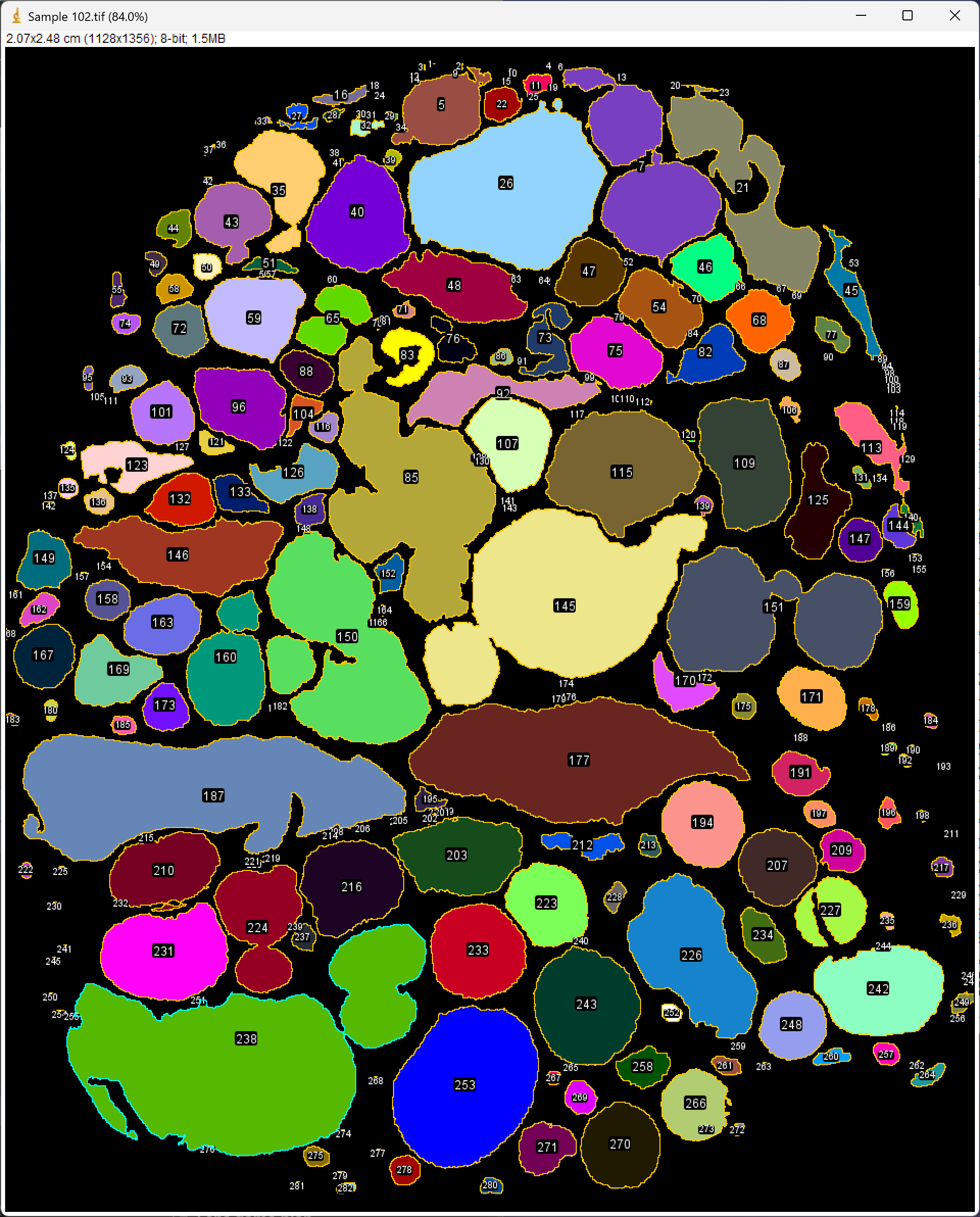
This is a placeholder.
This is a placeholder.
This is a placeholder.
This is a placeholder.
This is a placeholder.
This is a placeholder.
This is a placeholder.



Lorem ipsum dolor sit amet, consectetur adipiscing elit. Vestibulum id ligula porta felis euismod semper.